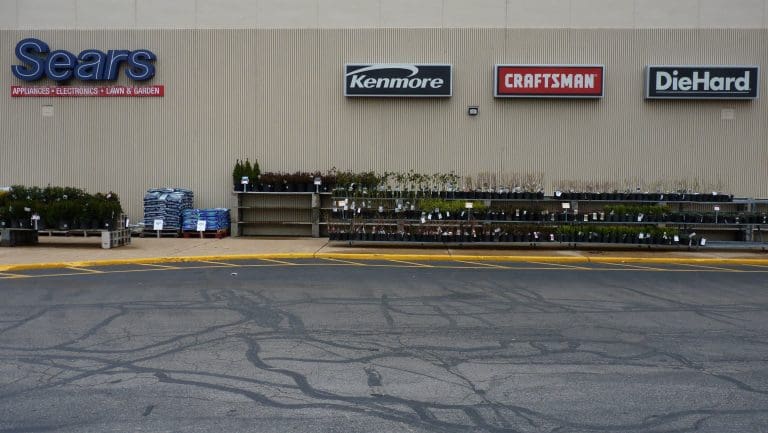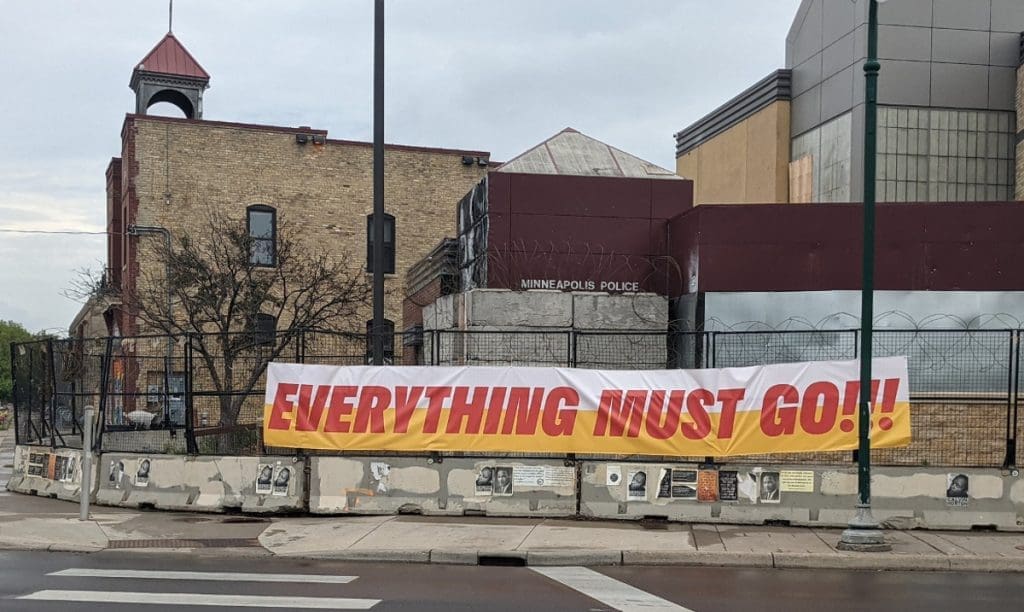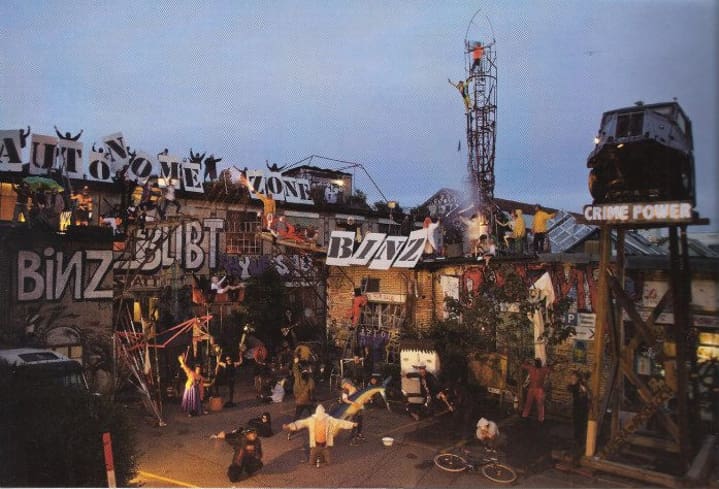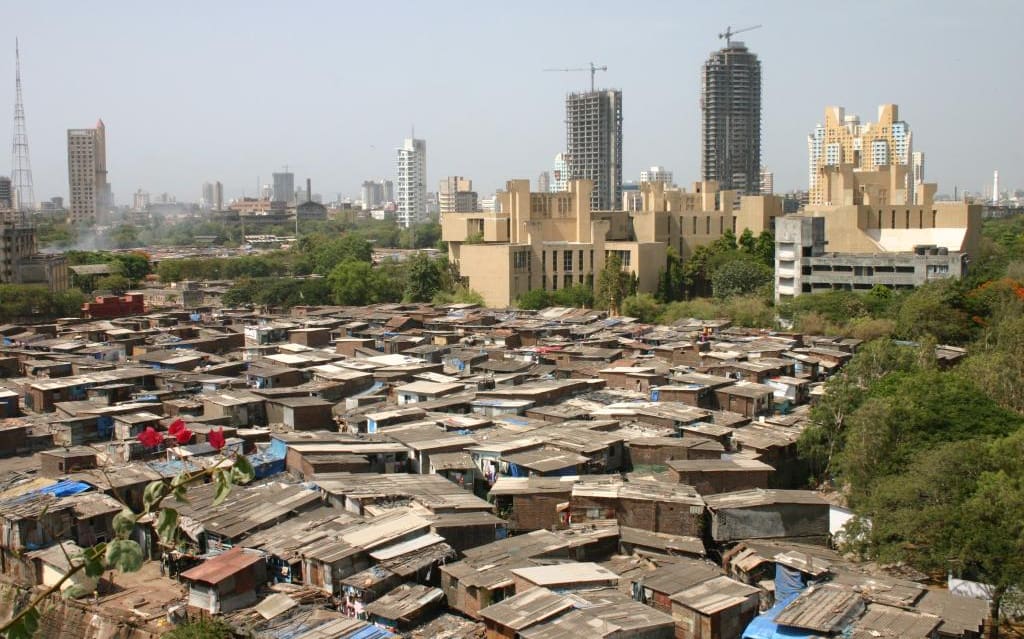Transcribed from the 4 November 2019 episode of This is Hell! Radio (Chicago) and printed with permission. Edited for space and readability. Listen to the whole interview:
Informal economies spring up to fill a gap when there’s a need. Equally important with meth cooking, though, is that meth also provides a physical, embodied sense of hope, and energy, and a sense of being productive and useful and capable—which is also an important lack that people experience when they are economically marginalized.
Chuck Mertz: What happens when the American dream is haunted by the nightmare of meth? How do skilled, well-paid industrial workers who are weekend DIY tinkerers in their garage become meth lab cooks? Here to take us on a guided tour of the world of meth, professor of anthropology and media studies at Purchase College State University in New York, Jason Pine is author of The Alchemy of Meth: A Decomposition. Jason also wrote the 2012 book The Art of Making Do in Naples, which examines how underemployed aspiring singers become entangled with the Camorra, the region’s powerful and volatile organized crime networks.
Welcome to This is Hell!, Jason.
Jason Pine: Thank you.
CM: You write, “While following the local news and chatting with students and people in town, one subject constantly circulated: home meth labs. There was talk of strange hoarding activity, peculiar shopping behaviors at Walmart and Walgreens, suspicious gatherings at trash piles in the woods. There were reports of homes colonized by meth cooks while the owners were on vacation, bizarre property crimes, exploding trailers, and the horrid discovery of what had been hidden inside. Emaciated, toothless tweakers stockpiled guns and ammunition and abused children. There were many concerns among these rumors and truths that drew my attention. But what unsettled me most was the fact that so many people were making meth. Unnumbered cooks were transmuting ordinary household products into an elixir that radically transformed the way that people lived, worked, and died.”
How obvious do you think it is to people working at Walmart that the people who are buying these household products are buying them to make meth? How obvious is the meth industry in counties like the pseudonymous Saint Jude County? How obvious is the meth industry?
JP: People get accustomed to the aesthetics, the appearance of people who are engaged in meth cooking, and they develop a sensibility. They can recognize the signs of what’s going on. It can be quite obvious.
CM: Why Saint Jude? You write, “The stories I recount take place in a northeastern Missouri county I call Saint Jude (a pseudonym), the county that annually ranked first in the state for meth lab busts.” Why was this the number one place in Missouri? Why Saint Jude? Why did Saint Jude end up being the number one county in Missouri with the most meth lab busts?
JP: The reasons are always multiple and complicated, and I can only conjecture based on what I’ve researched and read. Initially meth was popular because of the landscape of poverty and de-industrialization (although I prefer the term late industrialism because this is a place with an ongoing process of de-industrialization). More metropolitan areas have replaced the industrial labor force with other kinds of new-economy forms of labor, like information-based forms of labor. But in places like these, there are still factories that are operative, but many are inoperative, leaving behind them only the ecological injury of their operations. New jobs, new opportunities haven’t come to replace them. People are kind of left in the lurch.
This primes people for a kind of DIY sensibility. It already exists in places like rural Missouri, where people have a facility with manual labor or fixing things or doing it yourself—homesteading, hunting, dressing your catch—and also a familiarity with everyday household chemicals (or at least what’s more everyday in that region). People don’t really shy away from those kinds of products.
There are many other reasons that concatenate with those to make a lot of meth production a possibility.
CM: It seems like what meth did was fill an economic or an industrial vacuum, an employment vacuum, a financial vacuum for an area that had been created because of the decline of industrialization. Do you think that something like meth was inevitable when the new economy did not come about? Do you think that an illegal economy was unavoidable and inevitable when we changed from industrialization to this more service- and information industry economy?
JP: I wouldn’t say inevitable, but the potential was very strong. I saw this also in Naples. Informal economies spring up to fill a gap when there’s a need. Equally important with meth cooking, though, is that meth also provides a physical, embodied sense of hope, and energy, and a sense of being productive and useful and capable—which is also an important lack that people experience when they are underemployed or unemployed, marginalized.
CM: In an area with the most meth lab busts, how much does meth dominate society? The way these topics are discussed, it’s always sensationalized. It gives me the impression that Saint Jude County, Missouri is completely run by methheads, that everybody is a methhead, that it’s the most dominant feature of society.
How much does meth dominate that society? Or how much do we exaggerate the ability for meth to completely dominate a county?
JP: You’re right, it is exaggerated. It’s absolutely not true that it dominates any society. Everyday life consists of everything else that we’re familiar with. In that county in particular, people go to church, people engage in all sorts of charitable activities. There are courses and meetings at public libraries, festivals, ordinary life that’s uneventful. It is often colored by the fact that just about everyone knows somebody or is somehow connected to somebody who is involved in meth in some way. That could be a relative who is using or cooking or has been affected by a user, or maybe their nextdoor neighbor is cooking meth.
I wouldn’t say it dominates, but it definitely colors life. So much so that it can become kind of a normalized phenomenon, which is the danger.
Using meth is an economic practice in itself. Initially, people are able to go to work, work longer hours, and withstand fatigue and boredom at whatever job they have—roofing, cement work, trucking. Using meth is almost always the original reason to make meth.
CM: You write, “Most of the meth labs police identified during the years of my research were small scale, yielding only enough meth for personal use.” So most meth labs are for personal use? How often would you come across a meth lab where it wasn’t a user who was running it, but someone who was in it just for the business of making money and not for providing the drug for themselves?
JP: Not very often at all. I did speak to cooks who had larger operations. They were in prison. There was one person who was out—never got caught, actually, but was no longer operating. But the majority of busts are small-scale.
CM: I’ve known many marijuana dealers. Many of them do not ever touch their product. They’re all about their business. What does that reveal to you about meth? What should that tell us about meth, when most of the people who are creating it are using it themselves?
JP: That’s the cause and effect. People are cooking it for themselves, and they may have a bit more left over that they can share with friends and family, or sell, but the reason they’re cooking is to use it. And this is an economic reason. It’s not only the profits that you initially get from selling the little bit of meth you have leftover that is economic. Using meth is an economic practice in itself. Initially, people are able to go to work, work longer hours, and withstand fatigue and boredom at whatever job they have—roofing, cement work, trucking. Using meth was almost always the original reason to make it.
CM: You write, “You can cook meth from ordinary domestic consumer products—Energizer lithium batteries and muriatic acid commonly used to clean brick patios or unclog drains are available at big box stores like Home Depot, Lowes, and Walmart, which have long dominated local retail markets across the Midwest. In the same stores, you can find acetone and paint thinner and Coleman camping fuel (the brand that cooks prefer), Pyrex, Teflon, Pace salsa jars, and plastic spoons. They’ve got everything. Ubiquitous across much of Missouri and beyond, in pharmacies you can easily acquire instant cold packs or pseudoephedrine-based cold medicine (meth’s key ingredient) thanks to lobbyists in the employ of the pharmaceutical industry who fight proposed regulations.”
Considering the demand and necessity of all these household products for their household use, even without pharmaceutical industry lobbyists, can meth-making be stopped? All of these are household products that we do all regularly need and use, right?
JP: Narcotics agents and specialists who I spoke to said that small scale meth production in Missouri and throughout the United States can be blocked to a large extent if pseudoephedrine-based cold medicine were made prescription-only. There is a direct correlation between pharmaceutical industry lobbyists and small-scale meth production. I’m emphasizing small-scale, because the larger-scale superlabs have other ways of getting the key ingredient.
CM: So the pharmaceutical industry, then, is responsible for the meth epidemic? Do you think there will be any way they will be held responsible for the meth epidemic?
JP: This is a state-by-state and in some cases county-by-county operation of trying to get policy in place to regulate the circulation of pseudoephedrine-based cold medicine. Accountability? I don’t know. That would be lovely. I’m am enjoying that the pharmaceutical companies responsible for the the opioid phenomenon and the mass deaths related to it are now starting to be held accountable.
CM: What’s the effect of the war on drugs on methlabs and meth use? To what extent do you think people are cooking meth because other maybe less harmful narcotics are illegal, like marijuana, for instance? Do you think legalizing marijuana and other drugs could lead to a drop in meth cooking and use?
JP: No. I don’t think so, because of the phenomenology of meth and what people are seeking when they use meth. Marijuana is just a different experience. Methamphetamine is particularly alluring because it’s a performance enhancement. When you use it, you don’t quite believe that you’re intoxicated. You actually feel more alert, more capable, more alive—in all the ways that you feel you’re expected to be, without realizing that you’re feeling that expectation. You’re falling into line with an imminent demand to be productive, to be useful, to be “on it,” to be courageous, social, and proactive, and filled with endless energy and entrepreneurship and ideas and exploratory behavior.
In a sense, meth is perfect—other drugs are not as good—for syncing up with an everyday demand sensibility that just seems right.
CM: You write about how people who make meth invoke the metaphor of cooking—meth is a homey, domestic product—and how people in rural areas are very much into a DIY culture, so the cooking and the DIY all come together. “Cooks covet some recipes like precious secrets, and share them only with privileged intimates, sometimes across multiple family generations. Secrecy is a form of intimacy. The metaphor is so powerful that although meth labs are found anywhere in a house—just as the precursors are found in any ordinary home—people always call meth manufacture ‘cooking.’ A meth lab mixes fundamental human vitalities—domesticity, intimacy, cultivation—in a chemical cottage industry.”
Secrecy is a form of intimacy. Does that secrecy and intimacy, then, normalize meth-making? Is that the process by which there’s a normalization of meth-making, through secrecy and intimacy?
JP: I would say it influences it. I’ve encountered a lot of cases of inter-generational cooking: multiple generations in a household, recipes passed down. There’s a kind of complicity that can occur in neighborhoods. If your neighbor is cooking meth, you may not say anything because they’ll pay you off with some meth, or you don’t want any trouble, or you just mind your own business because you don’t know what the repercussions will be. Law enforcement may not be able to police and protect you.
Fear and secrecy, intimacy, can make this a phenomenon that’s there and submerged, and in that sense normalized.
CM: You go to a whole bunch of former meth lab homes; you talk about many different characters and tell the stories of many people. One of them is Howard Lee (again, that’s a psuedonym). You write, “The address of Howard Lee’s former trailer home and the one neighboring it are listed on the sheriff’s website. They refer to two of the 336 meth lab incidents county law enforcement recorded in 2012. The motley materials I found in Howard Lee’s home led me to still more wildly disparate objects. Many of the objects populate the two hundred other former meth labs I explored in Saint Jude, and really they populate any ordinary home in the United States.”
Was there anything you always found at every meth lab that didn’t have to do with meth production? I assume that you found the same production materials. But did you find anything in all these meth lab homes that surprised you, that nothing to do with meth?
As subjects of late capitalism, with our need to feel productive, “on,” useful—not only as a desire, but also as a feeling of insecurity and precarity, where it becomes an actual literal material necessity—meth comes at a great moment, a terrible moment, to help us do what we need to do.
JP: I did see a lot of tools for fixing things. This is something I had already noticed about people in this region. They do have an interest in fixing things and a capacity to do so. Sometimes the tools were blended in with the meth labs themselves. One of the shocking but uncanny things about meth labs is that they seem really ordinary. There’s just a bit of a tweak to the configuration or the constellation of elements in a home. It seems to be shuffled in new ways where it’s not as easy to distinguish the garage from the living room from the kitchen, based upon the elements that are reconfigured in different places. So the tools showed up in odd places.
CM: You call your book a “decomposition.” When you would enter a meth lab home, is that what you saw the most? You saw lives in decomposition?
JP: Yeah. By decomposition I mean maybe a hundred different things. Ordinary products are actively decomposed in order to recompose them into this new product. But also, ordinary products are already decomposing, and ordinary homes don’t need to be meth labs to become toxic. They already contain all of the chemicals used to make meth, and chemicals are not self-contained in their compositions as they are sold through chemical industries and the consumer end of that. They are leaky and diffuse, and off-gassing. Our sense of toxicity and purity, as ordinary people who are not using meth (this is just a hypothetical we) is a fiction. There are no clear boundaries to chemicals and how they leech and leak.
But decomposition is also figurative in the sense that when you look at a broken, busted meth lab, you see the tools and the evidence of frenetic activity: of tinkering, of tweaking, of entrepreneurial activity. To me, this indicates a kind of urge to succeed and to follow a kind of American dream that for a long time has become a bad dream, something that people pursue but experience as toxic.
One more thing—starting in the home and beyond it, there is the decomposition of ecology, of the geography, the literal ecological injury of late industrialism, and this new cottage industry that is perfectly situated within this chemical industry and its offerings.
CM: You write, “Alchemy is the ancient art/science of locating and harnessing the power of the philosopher’s stone, an ordinary, ubiquitous substance that promises to transmute base matter like lead into gold, or to yield the elixir of life. This art/science is now the work of late industrial alchemists. These new alchemists transmute banal industrial chemicals into a crystalline substance they can sell for a profit or into a pharmakon they can consume. Either way, they get more life.”
A pharmakon, in philosophy and political theory, is a composite of three meanings: remedy, poison, and scapegoat. You’ve already talked about how meth is a remedy—how it is a performance-enhancing drug. We know how it can be a poison. How is it also a scapegoat? And how can it maintain being all three at the same time?
JP: I hadn’t thought about this third meaning. But yes. This is the thing I hope most to achieve with this work: that meth, Missouri, these specific places and things and people are not scapegoated, are not highlighted as problems. Sure, there are problems. But this is, for me, an indicator of a broader problem.
I’m in this book myself. It’s important that listeners and readers know this. My own mother was an addict—maybe still is. And I was also for many years using legalized speed in the form of amphetamine salts, or adderall, because I was diagnosed with ADHD. It turns out that was a misdiagnosis—the real diagnosis is sleep apnea; long story. But the important bottom line for me is that just as there is the leakiness of chemical compositions that don’t have boundaries, you can’t contain them, these kinds of stories—yes, they may look monstrous and extreme or exaggerated in one place, but they really are versions of stories elsewhere (my own story and those of a lot of other people). We shouldn’t need to use these drugs to be in the world of sensibility where you’re extracting more energy from yourself in order to feel productive and useful.
Scapegoating a drug or a certain kind of drug user is not going to be helpful in addressing what made that particular drug or drug user possible.
CM: One of the things that you mention seeing in some meth labs is a Bible. I found that kind of odd, to find a Bible. But maybe I shouldn’t. It’s in the Bible belt, in Missouri, so I shouldn’t be that surprised. But what did that tell you about the people who you were trying to recompose?
JP: Religion is very important in the daily lives of the people I met. A lot of meth cooks explained the circumstances they lived in through religious terms. It was an idiom that was familiar to them, that made sense. There was a cook who told me he believed that when he was distributing meth to his clients, his customers, he felt that he was a minister or a pastor with a ministry, and those were his parishioners. He would dole out only enough to get them high, and if he saw them getting out there too far, he would scale it back. He would help them out if they got into debt or had some problem.
Others would describe explosions, or having escaped unscathed from an explosion, as a sign from god that they’re doing the right thing or as a chance to get out. The hallucinations people experience from cooking meth, during the cook—people would explain those in terms of religion as well. Many, many people talked about meth as sorcery. One book that circulates a lot is called Meth = Sorcery, which is a self-help recovery book where the author gathered up all instances in the Bible that indicate sorcery and alchemy and builds an argument saying that meth is actually the incarnation of the devil’s work, and that this needs to be addressed through a return to god.
Religion plays a very concrete, useful role, and the churches are important institutions, because they are filling a gap in recovery for many people—people who are using, but also people who are affected by users. Narcotics Anonymous meetings occur in churches, but it doesn’t have to be such a formalized practice for it to be helpful. Meth comes up in veiled terms in church: in the way people talk in sermons, on the marquees of churches—I found those fascinating, the kinds of messages that churches post weekly. Talk about “hard times,” “Don’t turn to the devil.” Religion is very important for people there.
CM: You talk about de-industrialization, which you label as late industrialism, and its impact on the growth of meth use and meth labs in Missouri. So how do you view globalization differently when you view meth as the price paid for globalization? Areas like the Rust Belt have been plagued by de-industrialization, but are also being plagued by a new drug manufactured out of household goods: meth. How do we view our economy differently when we see not just the stock market being at 27,000 but the fact that we have meth?
JP: That’s a loaded question, but I like the load on it. I think meth is a very strong indicator of a kind of sensibility that is toxic and that dominates the way that we live, in an embodied sense, as subjects of late capitalism. With our need to feel productive, “on,” useful—not only as a desire, but also as a feeling of insecurity and precarity, where it becomes an actual literal material necessity—meth comes at a great moment, a terrible moment, to help us do what we need to do.
Meth is only one way to do that, and it’s very extreme, but we do it in many ways. It’s a self-transformation in which we take on imperatives that are not always (and maybe not even often) ours. We have to be and do something else beyond ourselves, instead of thinking about rest or weariness or fatigue not as deficiencies, not as obstacles to be overcome, but rather as part of life, not as the opposite of life.
This transformation of how we’re feeling and living life as being “on,” being productive, being active in very narrow ways, is a direct result of the kinds of precarity that we feel on a material level—and also on an emotional, affective, embodied level.
CM: Jason, I really appreciate you being on the show this week.
JP: Thanks for the invite.
Featured image source: Jason Pine via 032c.





